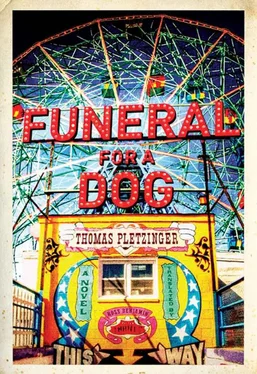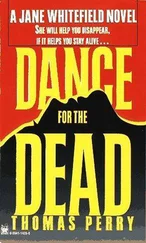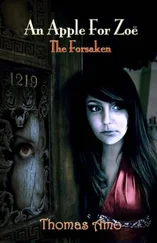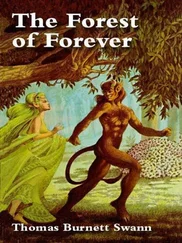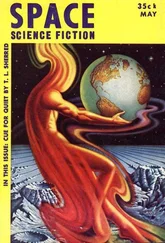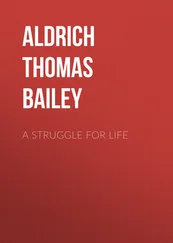Interview (Samuli)
MANDELKERN: Hello, Samuli. Samy.
SAMULI —
M: Come in, don’t be afraid. I’m just sitting here and writing.
S —
M: Did you climb up here all by yourself?
S —
M: Not bad, my friend. What have you got there? Did you get a gift?
S —
M: For me?
S —
M: Cake! That’s really nice of you, Samuli, thank you very much. Do you want some too?
S —
M: Red or blue? Would you rather have strawberry or this here? I’ll take the blue piece. It’s blueberry, I think.
S —
M: Strawberry’s better, right? Here.
S —
M: Do you like it?
S —
M: Can you draw? I mean: do you want to draw? There are a few crayons here. I’ll keep writing while you draw?
S —
M: Here. Blue for the sky. Yellow for the sun. Green for the water snake. Red for the flowers.
S —
M: What’s that? A grocery receipt? You want to draw on a grocery receipt?
S: I’m writing a prescription, Manteli .
M: You’re a little doctor, right? Like your mother. You’ve come just in time, because I have a stomachache.
S: I’m drawing a prescription for Lua.
M: Great.
S: Lua shouldn’t die sad.
between Christmas and New Year’s Day
On a blue winter Sunday between Christmas and New Year’s Day Elisabeth began, at first without discernible cause, to tell a story. We were lying on the bed and had been reading to each other, we’d been laughing. Both of them had been against the fashions of the moment, Elisabeth said suddenly, her husband had preferred something biblical, she something moderately Nordic (something imperishable: Jonas, Lasse, Joakim). But the child never got the name she’d had in mind, she said, he died before she and her husband could agree. Elisabeth emptied her cup of yogurt, I closed the book (the clink of her spoon). When she regained consciousness after the anesthesia, her husband already knew about the child’s death. He sat at the table next to several bunches of ten tulips and looked at the muted television. At that moment their marriage was over (the tragedy of wrapped flowers). In hindsight she would remember her husband’s facial expression as old and resigned. Even in retrospect she couldn’t really believe that he’d bought flowers after the boy’s death, as if there were something to celebrate.
Johannes Emmerich
She had seen the boy only for a few minutes. Elisabeth was lying stretched out stiffly next to me on the bed and looking at the ceiling, down on the street a bus drove by (the hiss of the hydraulic doors). Her husband had taken on the washing of the child, the measurements and weighing, finally the filling out of the documents for the registry office. She had still been almost completely anesthetized. Her husband had to register the birth, said Elisabeth, even though the death certificate was already lying on the table next to him. That’s how the child ended up with his name (Johannes). When she finally awoke from her half-conscious state, she and her husband were silent for a few minutes. He was silent, she said, she herself, due to the intubation and repeated vomiting, that is, due to the acid and minimal injuries to her pharynx, couldn’t speak at all. Then her husband grasped her left hand and began to speak (in her right hand the tube for saline solution and painkiller). For a long time she couldn’t cry or react appropriately, she was numb (lifeless, she said). I remained lying and hesitated, I didn’t know what to do with my hands, I felt like I was too young. The child, wrapped in a towel, had been brought from the postmortem unit for the good-bye, around noon her parents and the designated godparents had relieved her husband in short shifts. Elisabeth was lying motionlessly next to me (I would only have to turn my head). The clinic had scheduled the autopsy for the days to follow and summoned a mortician. Usually the clinic psychologist arrived immediately in such cases, but it was the 1996 New Year and there was a lot to do, she explained. Christmas and New Year’s Day are the preferred dates for suicide attempts. I didn’t say anything (words failed me). I should still touch her, said Elisabeth, she wasn’t made of cotton candy. But when I then brushed her hair aside, she bit her upper lip bloody. Pro forma the police had to be informed, the autopsy was compulsory due to the initially unknown cause of death. A few weeks before the birth all they’d been able to detect with ultrasound was a narrowing of the unborn child’s small intestine (duodenal stenosis), which had not indicated a risk for the birth, all that had been discussed was a later surgical widening. Elisabeth got up and opened the window, then closed it again a moment later. It had actually been duodenal atresia. Under the stress of the prolonged birth the child had to vomit (Elisabeth in the middle of the room alone, not even the furniture, not even I). That wouldn’t have been an unusual occurrence either, but the bile had been unable to flow downward because the small intestine was obstructed. It had therefore been forced to escape upward from the duodenum. When the child had ultimately inhaled the vomited bile as he gasped for his first air, the strong acid had irreparably corroded the upper layer of the lungs, as a result the child could apparently no longer receive artificial respiration (he must have struggled for air, she supposed). Because the death was an internal clinic matter, Elisabeth explained to me, the police investigations had already been concluded before they even commenced (she had never been alone with the boy). She lay back down on the bed, and I finally tried to hug her. But when Elisabeth then saw that I had tears in my eyes, she ran her fingers over my face as if she had to console me.
coarse granite
They’d hesitated, said Elisabeth, as we later walked along the frozen Elbe beach. She and her husband hadn’t separated immediately. The sun was shining, the beach full of strollers and frolicking dogs. The child’s death had been a break in the perspective of their relationship (from that point on they’d had increasing differences). It was several years before she was able to part from her husband, Elisabeth explained, they’d first had to become friends in order to get out of each other’s way (she had already stopped saying “my husband” when we met, she called him by his first name). The child was buried in the Niendorf cemetery, they still met for visits to the grave at irregular intervals. At that time her husband had supported Elisabeth’s desire to focus for a while on her studies and afterward on her work. Back then they’d still occasionally been of one mind. During her last year and a half at the university, she’d already worked her way up in various editorial departments of Gruner + Jahr (he had supported her in that to the best of his ability). Elisabeth looked across to the cranes and dry docks. She felt for my hand. She’d meanwhile grown accustomed to the boy’s name on the gravestone (blackened steel on coarse granite). Her husband, though, would never go to the grave alone. It astonishes me, Elisabeth then said, turning to me, that it gets visibly harder for him. She seemed to want to laugh. Though he was now in Hamburg only occasionally, the lost possibility plagued him (he’s getting more melancholy, said Elisabeth, almost even pathologically so). He had two adult children from his first marriage, but he was focusing more and more on the missed opportunities of his life. Elisabeth leaned her head on my chest. She, on the other hand, had the past, the future, and me (I have you, Daniel).
Is that so, Elisabeth?
The screams startle me, but the boy is unruffled. He’s still kneeling on the floor of Svensson’s study and drawing pictures only he comprehends (I can’t interpret children’s pictures). The sun, he says, holding the green crayon in his fist. Lua, he laughs, scribbling a bright red on the white wall below the window. Äiti , he whispers, decorating the sun. The screaming by the water doesn’t stop. The screaming gets louder. Svensson is standing bare-chested by the water, holding a brown rooster in the air by its feet (William Wordsworth). He’s standing on the dock, he’s spinning the animal in circles like a swing carousel, he’s spinning the orientation out of its head (his arm a swing). Lua lifts his head. The dog rolls heavily from one flank onto the other, he puts his remaining foreleg into this roll, his hind legs he braces in the flowers, then he gets to his feet, lurches a bit to the side, and is standing. Tuuli is waiting off to the side and watching Svensson (the panicked fluttering of the other rooster behind the windshield of the Fiat 128 Sport L). Svensson with the dazed rooster in his hand approaches the firewood block on which he was just chopping wood and picks up the ax. William Wordsworth slowly opens a wing and closes it again, then Svensson chops off his head. He holds the bird like a wet umbrella, its blood drips on the ground and the dock. He hangs the empty animal on a chair and gets Robby Naish from the Fiat. Svensson has to spin the white rooster much longer, he doesn’t get the neck until the third blow into the bloody fluttering (it surprises me that the dead bodies remain completely motionless, I was expecting a headless escape). Then everything is the same as always: the pigeons are cooing, the cicadas are making their shrill noise, Daisy Duck, the hen, is clucking on the roof of the blue Fiat. Lua is lying heavy and black on his side in the sea of oleander flowers, in the hiss of the mute swan. Svensson steps over the blood on the planks and jumps in the lake. Tuuli takes the animals’ heads and bodies and walks toward the house. Far beyond the white buoy Svensson resurfaces and waves (Lua is too old to lift his head again).
Читать дальше
